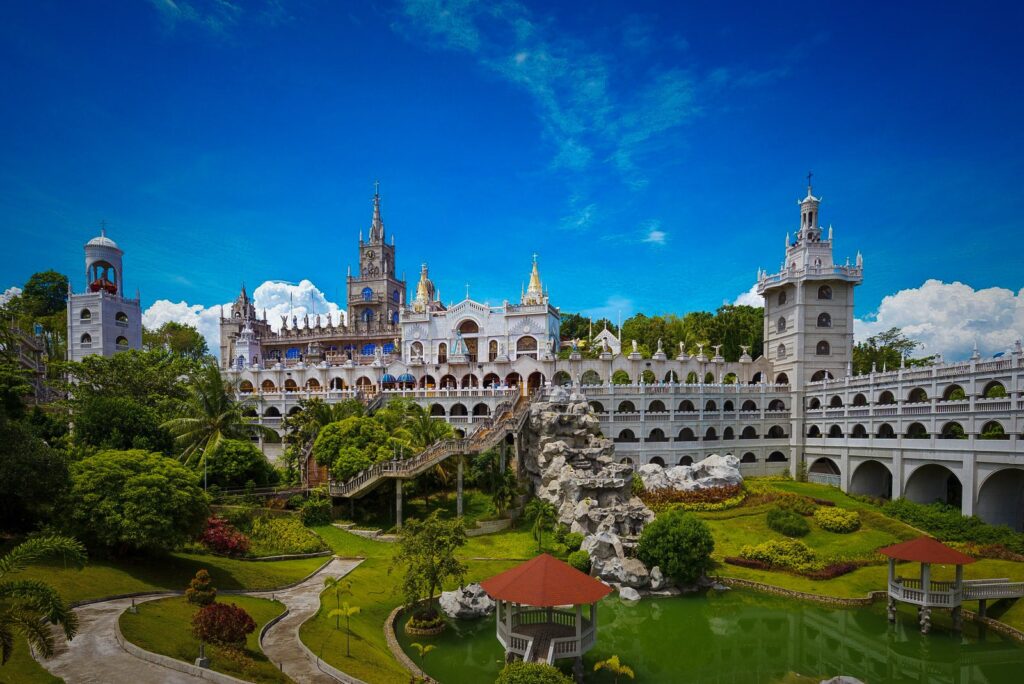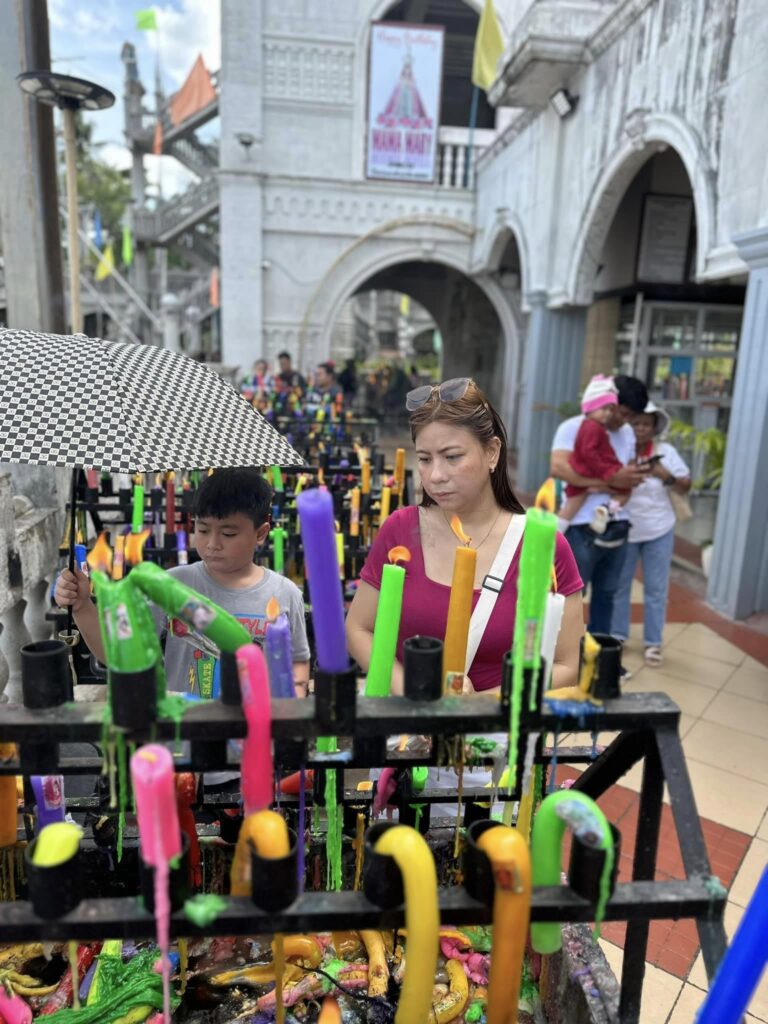
Simala Shrine Photo (outside)
Nestled amidst the lush hills of Sibonga, Cebu, the Simala Shrine stands as a beacon of faith and devotion. This sacred site draws pilgrims and tourists alike, seeking solace, blessings, and a glimpse of the divine.
Simala Shrine History and Significance
A Marian Devotion Hub
Simala Shrine History, officially known as the Monastery of the Holy Eucharist, is dedicated to the Blessed Virgin Mary. Its roots trace back to the early 1990s when a group of devotees claimed to witness miraculous events at the site. Word spread, and soon pilgrims flocked to this remote hilltop, seeking healing, protection, and spiritual renewal.
Miracles and Mysteries
The shrine gained fame for its reported miracles, including weeping statues, answered prayers, and inexplicable healings. The faithful believe that the Virgin Mary actively intercedes for those who visit, granting blessings and graces. The shrine’s reputation as a place of divine intervention continues to grow, drawing thousands each year.
Architecture and Design
A Blend of Styles
The Simala Shrine’s architecture is a fusion of Gothic, Byzantine, and Romanesque influences. Its grand facade features intricate carvings, stained glass windows, and soaring spires. The central altar houses a life-sized statue of the Virgin Mary, adorned with jewels and gold.
Ornate Details
Inside, visitors are greeted by a profusion of religious art—paintings, sculptures, and mosaics—all celebrating the Virgin Mary. The shrine’s halls and chapels exude an otherworldly aura, inviting contemplation and prayer.
Pilgrimage Experience
The Journey
Pilgrims ascend the winding path to the shrine, passing through lush gardens and Stations of the Cross. The journey itself becomes a spiritual exercise—a time for reflection, penance, and hope.
Prayer and Petitions
At the shrine, visitors light candles, offer prayers, and write petitions. The scent of incense mingles with the rustle of leaves, creating an atmosphere of reverence. Many come seeking healing, guidance, or simply a moment of connection with the divine.

Simala Shrine Photo (Prayer and Petitions)
A Place of Peace
Whether you’re a devout Catholic or a curious traveler, Simala Shrine offers a serene escape from the world’s hustle and bustle. Amidst the quietude, one can’t help but feel the presence of something greater—a sanctuary where faith and miracles intertwine.
How to go to Simala Church from Cebu City
- Private Tour (Recommended) – For a more personalized experience, consider booking a private tour. Private tours often include transportation and an accommodating, friendly driver.
- Drive – If you prefer driving, you can take your own car from Cebu City to the Simala Shrine. The distance is approximately 56 kilometers, and the drive takes around 2 hours to 2 hours and 30 minutes with moderate traffic.
- Taxi:
- You can either hail a taxi from the street or book one through a taxi app like Grab.
- Inform the driver that you are going to Simala Church in Sibonga. It is advisable to mention that it is also known as the Monastery of the Holy Eucharist.
- The fare from Cebu City to Simala Church typically does not use a meter and ranges between PHP 3,000 to PHP 3,500. Ensure you and the driver agree on this price.
- TNVS (Grab)
- Ensure you have the Grab app installed on your smartphone.
- Set your pickup location.
- Set your destination as “Simala Church” or “Monastery of the Holy Eucharist, Sibonga”
- Confirm the booking and wait for your Grab driver to arrive.
- The fare with Grab can vary but expect a similar range to taxis.
Learn more in these pages and articles









